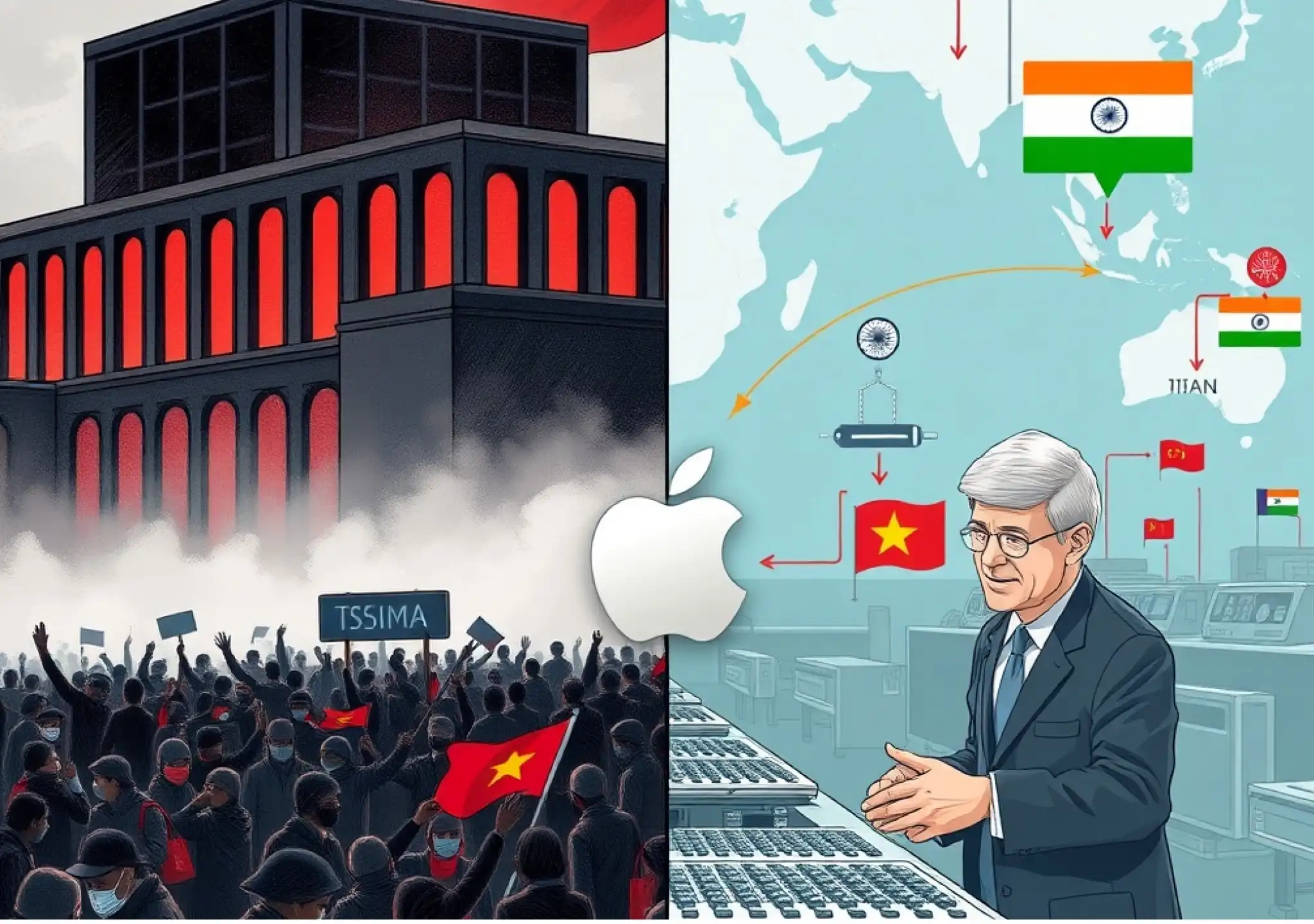Apple is increasingly diversifying its supply chain, seeking to reduce dependence on China by shifting production to countries like India and Vietnam due to growing concerns over geopolitical tensions and challenges in China.
Protests and Production Delays
In November, protests erupted at Foxconn’s massive Zhengzhou factory in China, which is critical for iPhone production. Workers, frustrated by COVID-19 restrictions and unpaid wages, clashed with security. These protests disrupted production, risking delays for Apple’s new iPhone models, coinciding with the company’s busiest sales season. As China accounts for around 90 percent of Apple’s manufacturing, finding alternative production sources has become a priority.
Shehzad Qazi, managing director of the China Beige Book consultancy, stated that the concentration of Apple’s supply chain in China makes it highly vulnerable. Qazi explained that shifting production to other parts of Asia is a long-term challenge, especially when building new “iPhone cities” outside China is not a quick solution.
Apple Expands Production in India and Vietnam
Apple has been increasingly focusing on India and Vietnam as alternative production hubs. In May, CEO Tim Cook hosted Vietnamese Prime Minister Pham Minh Chinh at Apple’s headquarters, reinforcing Apple’s commitment to shifting some production to Vietnam. In September, Apple started producing its iPhone 14 in India, marking a significant expansion of its manufacturing there, where it has been assembling older iPhone models since 2017.
JPMorgan estimates that by 2025, India could produce 25 percent of all iPhones. Although Apple is shifting some production, its entrenched position in China remains vital, with 95 percent of iPhone manufacturing still in the country.
Challenges of Diversification
Despite efforts to reduce reliance on China, Apple’s deep-rooted manufacturing ecosystem is difficult to replicate elsewhere. A former Apple executive explained that China’s labor market offers flexibility that other countries, like India and Vietnam, cannot match. Apple benefits from China’s massive labor pool, which can quickly scale up and down according to production needs. China’s industrial clusters also offer significant cost advantages and support Apple’s strategy of ensuring suppliers compete with one another, preventing over-reliance on any single company.
Impact of US-China Tensions and Export Restrictions
Apple’s challenges are compounded by political and trade tensions between the US and China. In October, Apple ended its contract with Chinese chipmaker Yangtze Memory Technologies after it was blacklisted by the US government, further pushing Apple toward the US-led supply chain. Apple has since turned to South Korea’s Samsung for memory chips, and to Taiwan Semiconductor Manufacturing Company (TSMC) for advanced chips.
Apple’s reliance on Taiwan, which is a flashpoint in US-China relations, adds further complexity to its supply chain strategy. Geopolitical tensions over Taiwan remain a major concern, with the possibility of a Chinese invasion prompting US officials, including President Joe Biden, to express support for Taiwan’s defense.
Ongoing Uncertainty in China’s Post-COVID Landscape
The shift away from China is also influenced by the ongoing impacts of China’s “zero-COVID” policies. Although some restrictions have been lifted, others, such as quarantine requirements for international travel, persist. The uncertainty surrounding China’s reopening process raises concerns about continued disruptions, as the virus continues to spread across the country.
Qazi emphasized that the end of China’s zero-COVID strategy would be gradual, with potential for re-imposition of restrictions until the population is fully vaccinated. As China becomes an increasingly complex environment for foreign companies, particularly American ones, Western businesses are likely to face greater challenges from China’s evolving social and political landscape.

